Whether you realize it or not, technical writing is all around us.
Assembling a desk from IKEA? Someone wrote that instruction manual that you are looking at.
Reading a B2B sales pitch that arrived in your inbox? Someone created that.
Learning about a product management software your company bought for its developers? Someone crafted that detailed product documentation you’re reading.
That someone is a technical writer, and in this article, we’ll examine what it means to be one and how their expertise can benefit any organization.
What Does a Technical Writer Do?
The easiest description of what a technical writer does is that they create technical documentation. However, to truly understand that job, we should examine it more.
Let’s start with defining what technical writing itself is.
Here’s how John Espirian, LinkedIn consultant and web content creator, explains it:
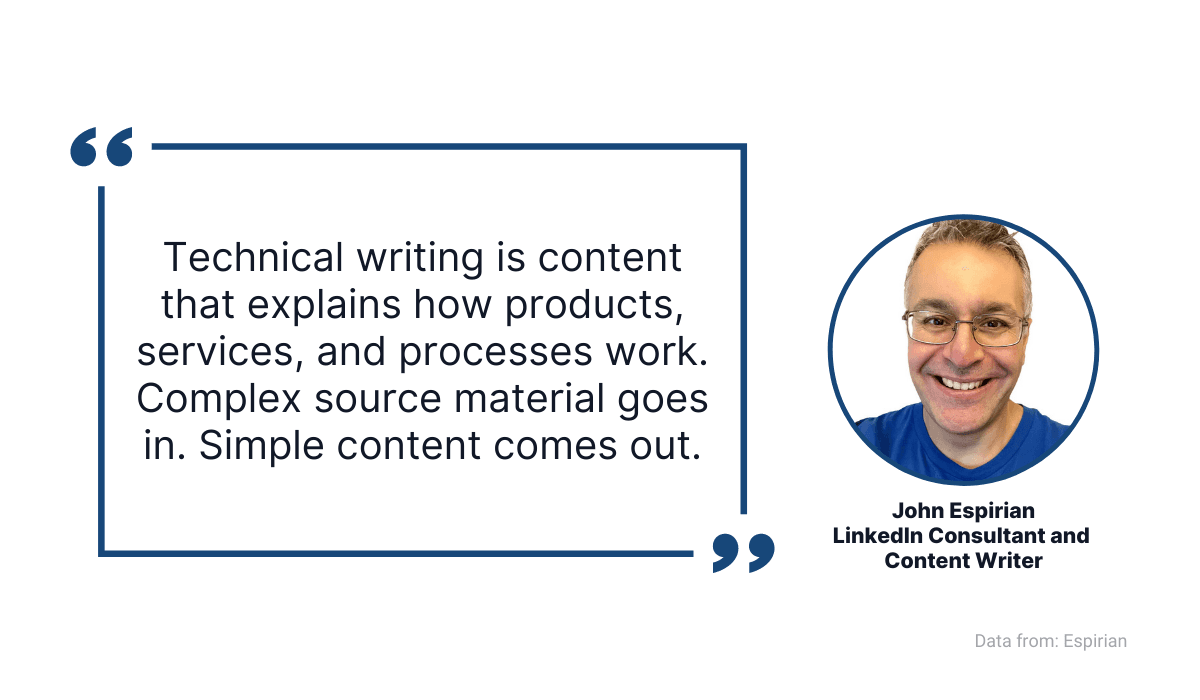
Source: Archbee
Therefore, a technical writer is someone who creates that kind of content.
More precisely, that can include a wide range of documentation, from user manuals and instructions to style guides and API documentation for software developers—it depends on which industry a technical writer works in.
We can say that a technical writer is a link between technical staff and users. As Adam Liss on Quora wrote, a good technical writer basically translates “from engineer to human”.

Source: Quora
As we mentioned, technical writers can create many different types of documents.
However, we can sort them into three categories:
- Consumer-directed
- Expert-to-expert
- Technical marketing content
Consumer-directed technical writing refers to documentation written for the end-users.
That includes user manuals or guides, employee handbooks, software user documentation, troubleshooting guides, etc.
For example, Stripe, a payment processing software, has comprehensive technical documentation on its website.
Below is a guide for Stripe’s payments APIs, a piece of consumer-directed technical documentation.
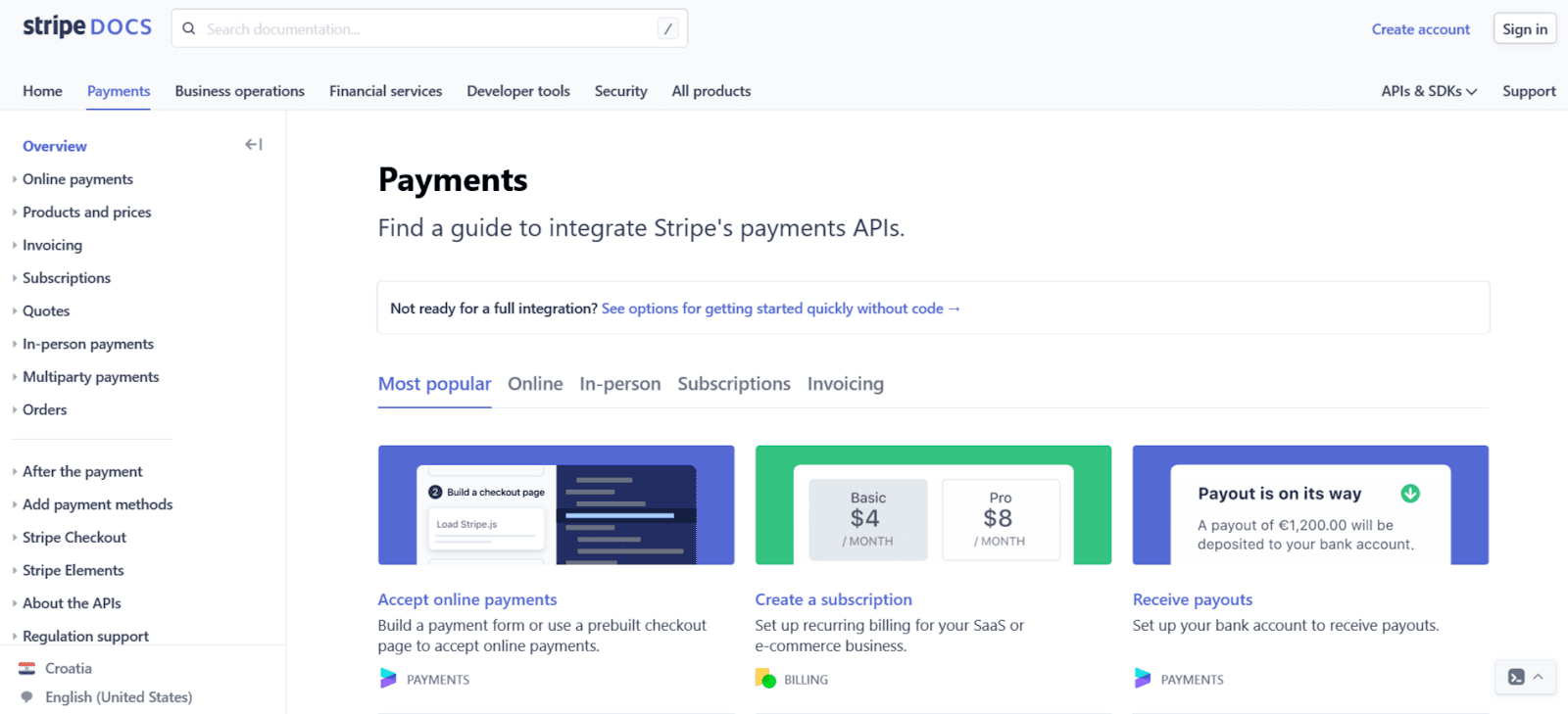
Source: Stripe
Since consumers aren’t necessarily technology experts, writers who create consumer-directed documents tend to simplify the subject matter.
On the other hand, expert-to-expert documentation like medical studies, scientific papers, business reports, legal case reviews, etc., are written for knowledgeable readers.
For instance, take a look at the excerpt from a medical study below.

Source: ncbi.nlm.nih.gov
As you can see, the language isn’t simplified for a wider audience—expert-to-expert documentation doesn’t require that from the writers.
On the other hand, technical marketing content should be more approachable.
Its purpose is to present technical information in an appealing way so it promotes a particular product or service.
Marketing case studies, white papers, press releases, brochures, business proposals, etc., all have that quality in common.
For example, a white paper presents a topic and an issue around it to educate readers while often pointing out a product that can successfully solve it—like the one from CodinGame.

Source: CodinGame
It presents the needs of today’s software developers in an in-depth analysis while at the same time arguing how CodinGame is a solution for meeting those needs.
In conclusion, technical writers combine deep knowledge of the topic with the ability to present it to their audience. It’s no wonder they’re in high demand—but more on that in the next section.
Global Demand for Technical Writers
The demand for technical writers is rising year by year, and if the current trends continue, it isn’t likely to stop growing in the coming years.
Why is that?
One of the reasons is that technology is an important factor in many fields that aren’t usually considered a part of the IT industry, which is generally considered the primary industry that requires their skills.
According to the U.S. Bureau of Labor Statistics data, it still employs the highest number of technical writers.
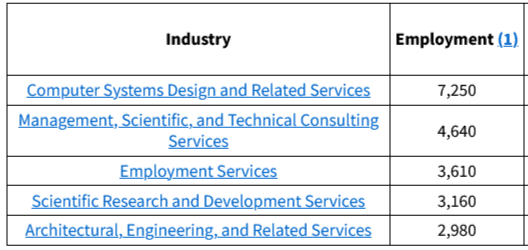
Source: Bls
However, other industries are closing in with the number of technical writers they need.
For instance, take a look at the application of Virtual Reality (VR) technology in medicine.
Source: Universität Basel on YouTube
You can be sure that surgeons who use that technology need reliable technical documentation to support it.
Good communicators are an asset to most companies, and technical writers are precisely that.
As Mats Hermansson, Technical Information Strategy Manager at Saab, pointed out, people trust companies who make an effort to create good documentation.

Source: Archbee
All of the reasons we mentioned are causes for an above-average demand for technical writers.
The data from the U.S. Bureau of Labor Statistics indicates that. They projected that there’d be a 12% increase in the employment rate of technical writers from 2020 to 2030.
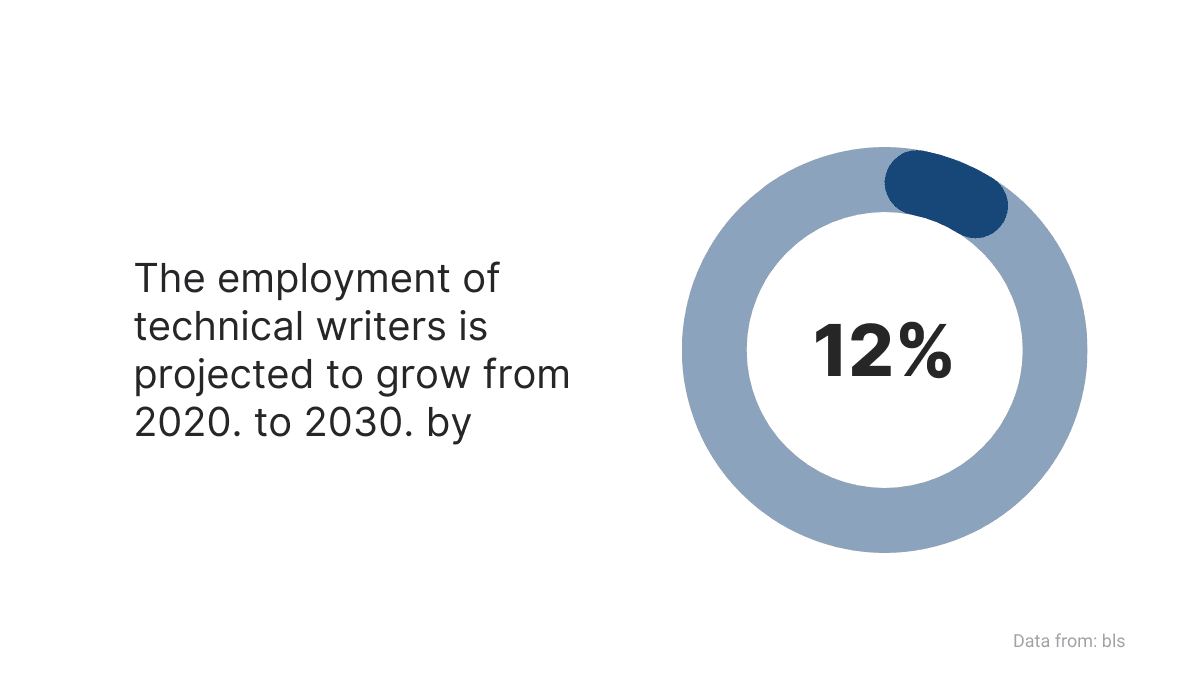
Source: Archbee
For comparison, the average growth rate for all occupations is 8%.
If you’re a technical writer, the demand for your services is noticeable even with a quick search on job listings websites.
For instance, on ZipRecruiter, an online employment marketplace, you can browse through more than 43,000 job postings listed under the “technical writer” category.
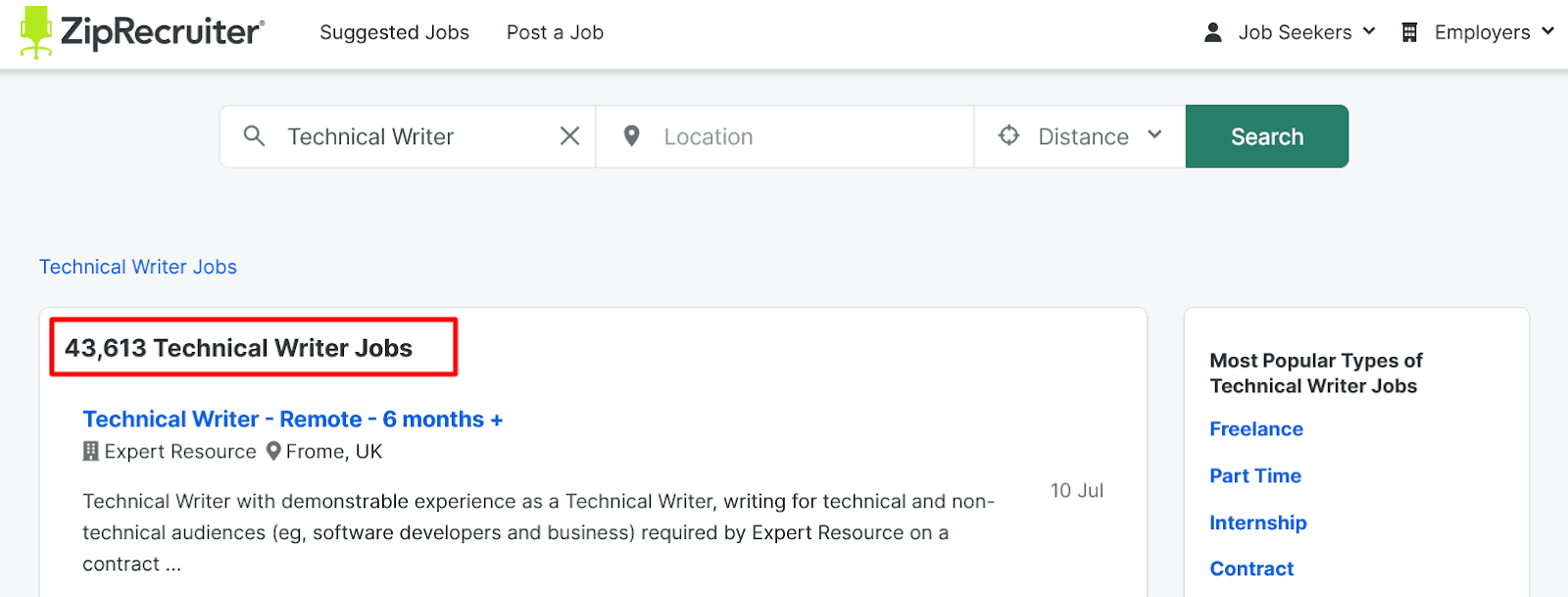
Source: ZipRecruiter
And the companies actively look for candidates in other places, too.
For instance, the company SuperTokens posted their ad on Twitter, in which they also explained why technical writers are in such high demand.
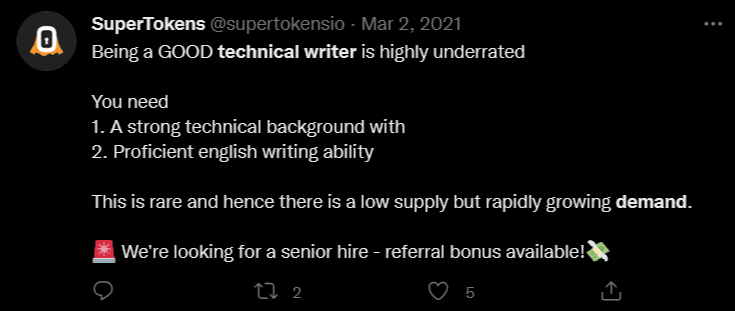
Source: Twitter
As technology penetrates more and more industries, the global demand for technical writers increases.
The reason is simple—wherever there is any innovation or development, someone needs to communicate that to the public. But more on writers’ responsibilities in the following section.
Common Responsibilities of a Technical Writer
Although at first glance it may seem that technical writers need only sit and write, the reality is a lot more diverse and nuanced than that.
The responsibilities of a writer depend on the company they write for—for instance, a technical writer at Google will have specific responsibilities regarding writing their guide for transcribing short audio files.
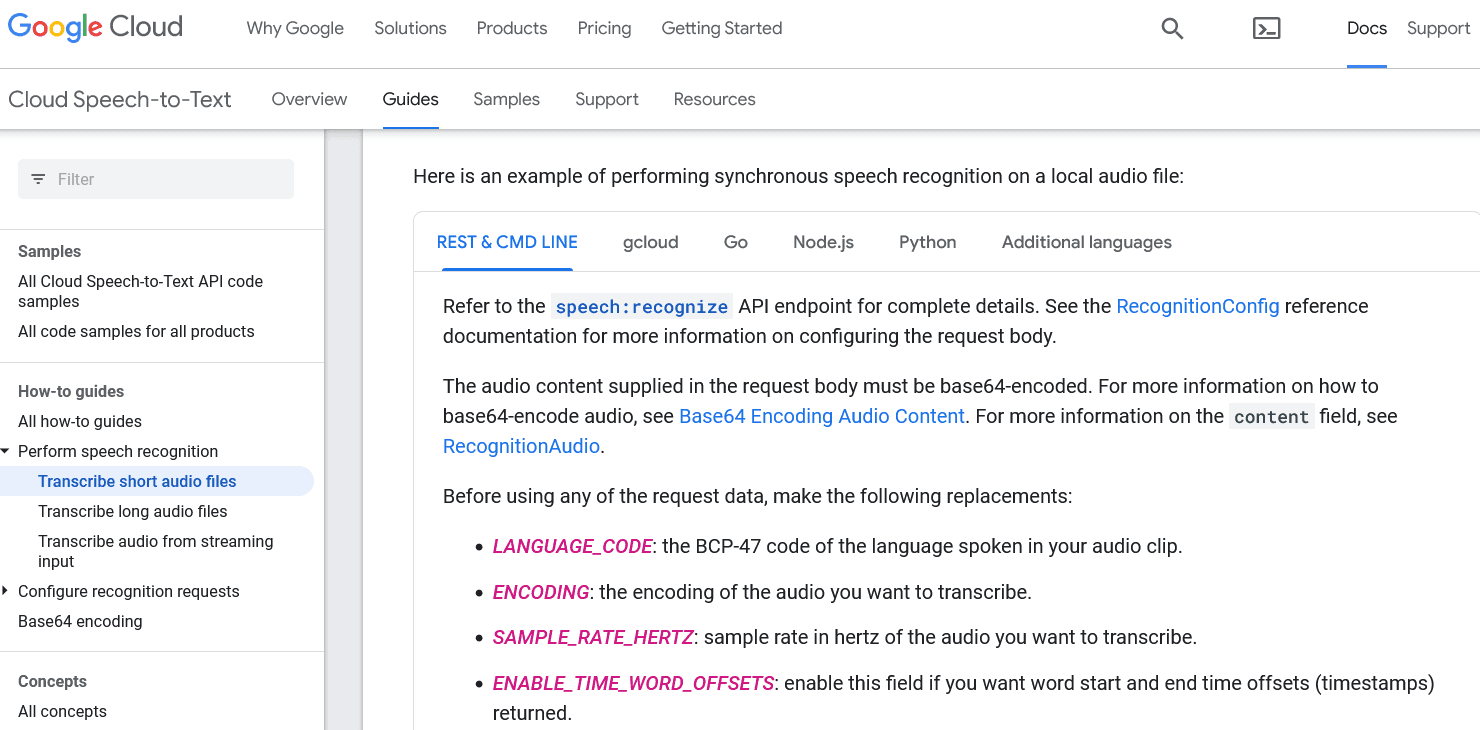
Source: Cloud.google
However, regardless of the company, technical writing encompasses a variety of responsibilities that take place before, during, and after the actual act of writing.
Let’s start with their responsibilities before writing documentation.
One of them is subject matter research. Simply put, a technical writer should have a certain level of knowledge about the subject they’re writing about.
They can acquire that knowledge by learning about the subject through various resources, whether by researching on the internet, reading literature, or even going to the source—subject matter experts.
For example, Edidiong Asikpo suggests reaching out to experts, and this is how she does it:

Source: Freecodecamp
As you can see, her method is to be straight and to the point while providing all the necessary information in the first message—who you are, what you need, and acknowledgment of their expertise and possible time constraints.
After research, technical writers should create a plan.
Document planning is the phase where they assess the project’s scope, the resources and time needed to complete it, and other preparations they consider helpful.
Many software tools can be useful in this phase. For example, with Todoist, a writer can track their tasks in a simple interface, organize them by priority, take notes and plan ahead.

Source: Todoist
Finally, technical writers write the documentation, edit it when needed, and maintain it, so it’s always useful.
With a tool like Archbee, those tasks are hassle-free.
For example, writing is simple thanks to the powerful Editor, which boasts features like formatting documents with blocks, importing media, tools for writing software documentation, etc.
Here’s how Post Maker, a tool for creating social media content ideas, used Archbee for their documentation.
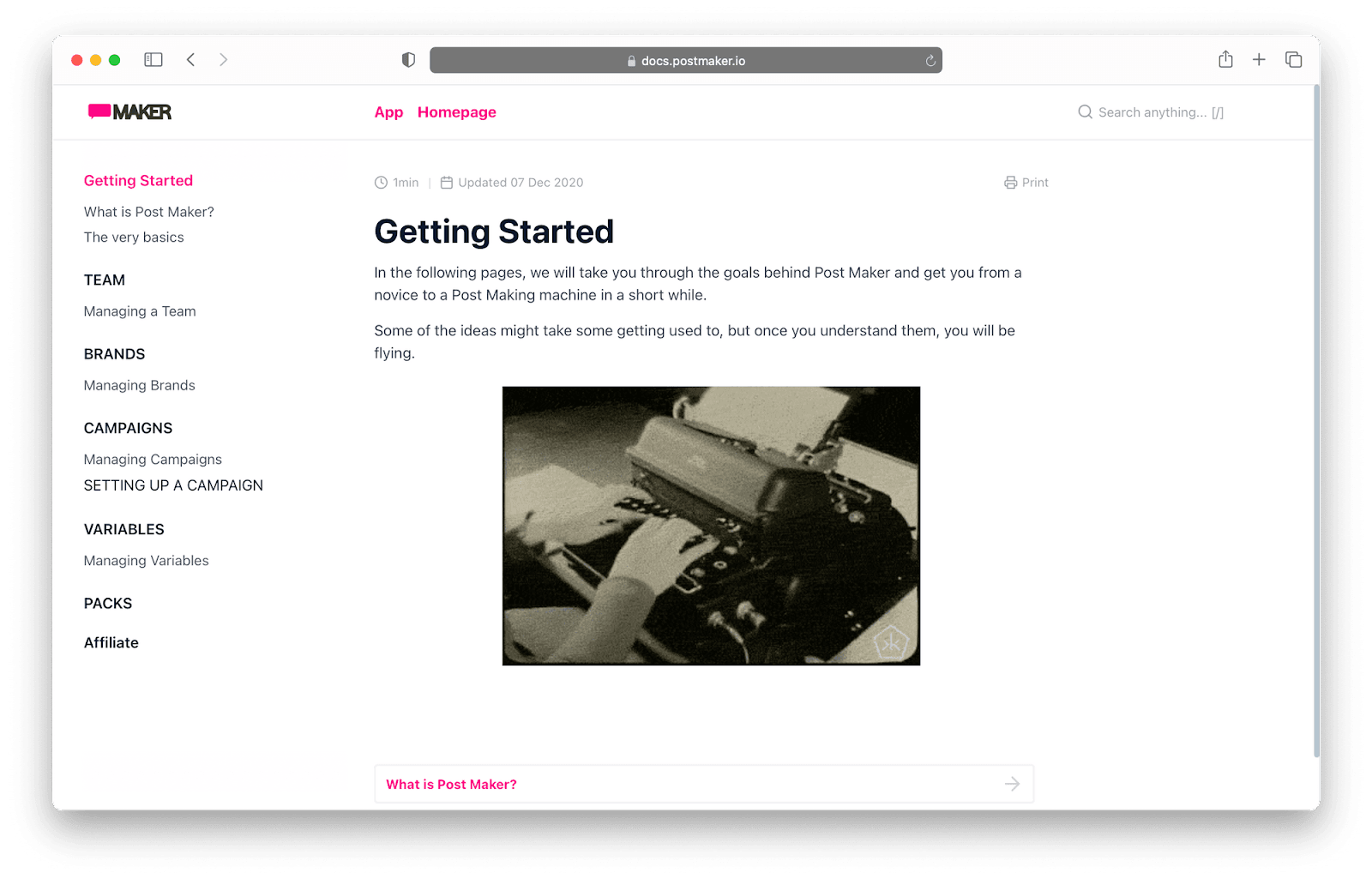
Source: docs.postmaker
After writing technical documentation, sooner or later, there’s a need to review it and edit it to maintain its quality.
With Archbee, the whole team can collaborate if needed, leave comments, and polish documentation where necessary.

Source: Archbee
As you can see, a technical writer’s job is filled with responsibilities.
However, with good organization and helpful tools, those responsibilities shouldn’t become a burden.
Why SaaS Companies Need Technical Writers
Software-as-a-service (SaaS) companies can benefit a lot from well-written technical documentation—it can help them cut costs, be more profitable and retain more customers.
SaaS companies offer software as their product, and software is complex—you can’t expect every customer to know how to use every feature instantly, however user-friendly it might be.
Therefore, technical documentation is a necessity for SaaS companies.
Some companies turn to engineers and developers to create it, but as Kesi Parker explained on Quora, that can impact its quality.
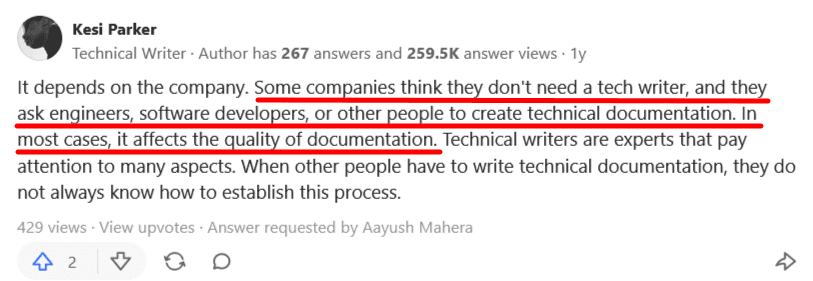
Source: Quora
And if the quality of technical documentation suffers, that can affect the productivity of the software development team, not only the satisfaction of customers.
According to a Stack Overflow survey, developers regard poor documentation as the second most common challenge in their workplace.
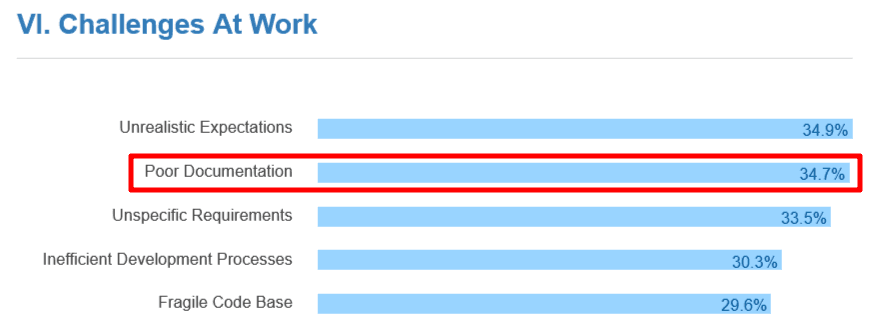
Source: Insights.stackoverflow
So, the quality of technical documentation can impact your development team, make your product more challenging to use, and it doesn’t end there—having good documentation can save SaaS companies a lot of money.
How? By providing customers a resource where they can get answers to their questions.
Technical writers can create comprehensive tutorials, articles, FAQ pages, and other resources that help customers without investing many additional resources.
For instance, take a look at the costs of phone support, email, and chat compared to web self-service.
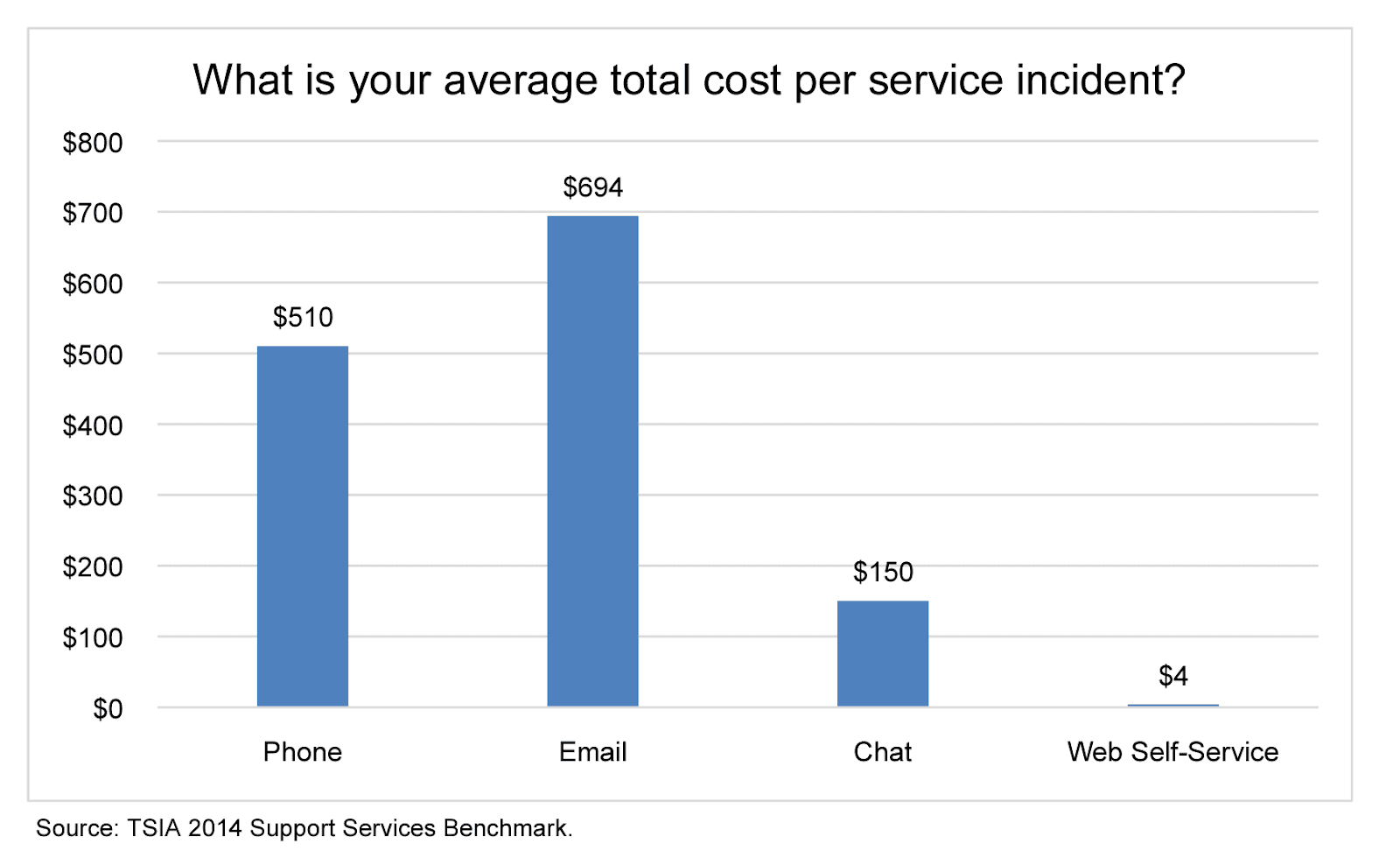
Source: TSIA
The financial benefit of having the relevant documentation is clear.
Other support methods require trained people, time, and effort, while technical documentation can serve an indefinite number of people, provided it’s properly maintained and updated.
Furthermore, as many SaaS companies operate on a subscription-based model, it’s important that customers find their software easy to use—otherwise, they might move on to their competitors.
For example, HelpScout, a web-based SaaS company that offers customer support software, ensures its customers have access to detailed documentation.

Source: Docs.helpscout
They organized articles into categories, filling every category with helpful information.
For instance, let’s look at the Account Management category, which has 30 articles.
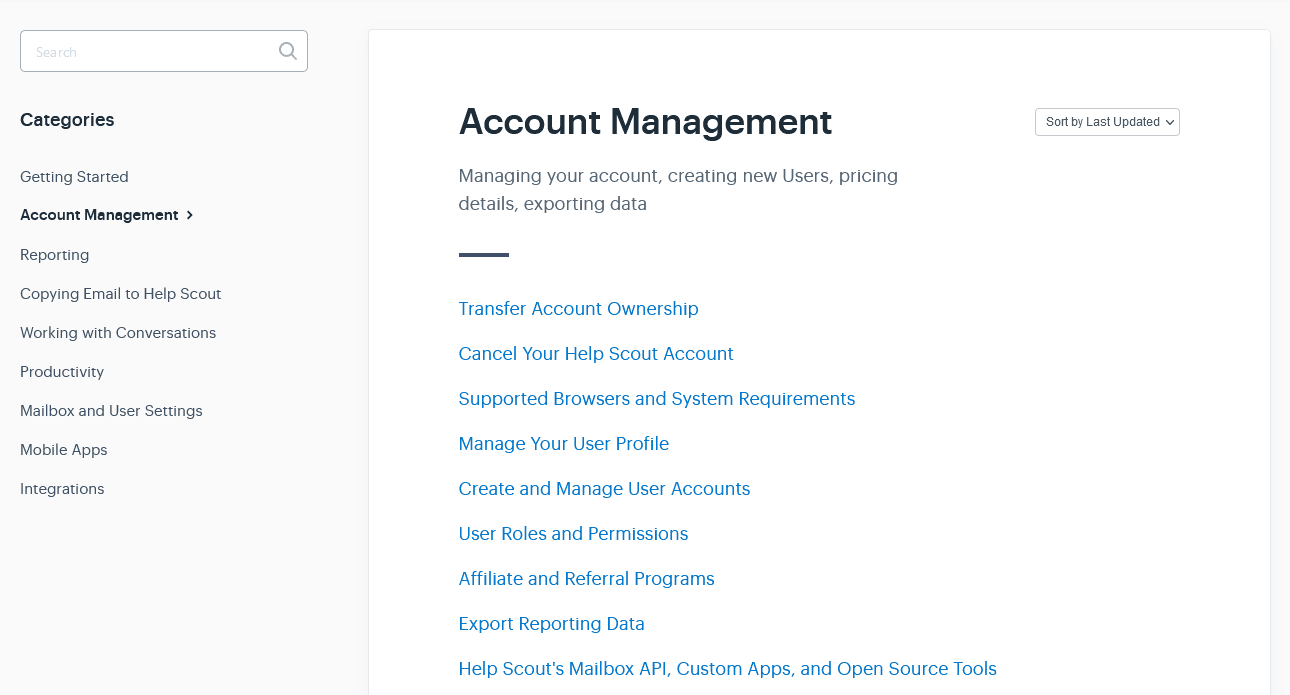
Source: Docs.helpscout
And every article is enriched with step-by-step instructions and screenshots to illustrate them.
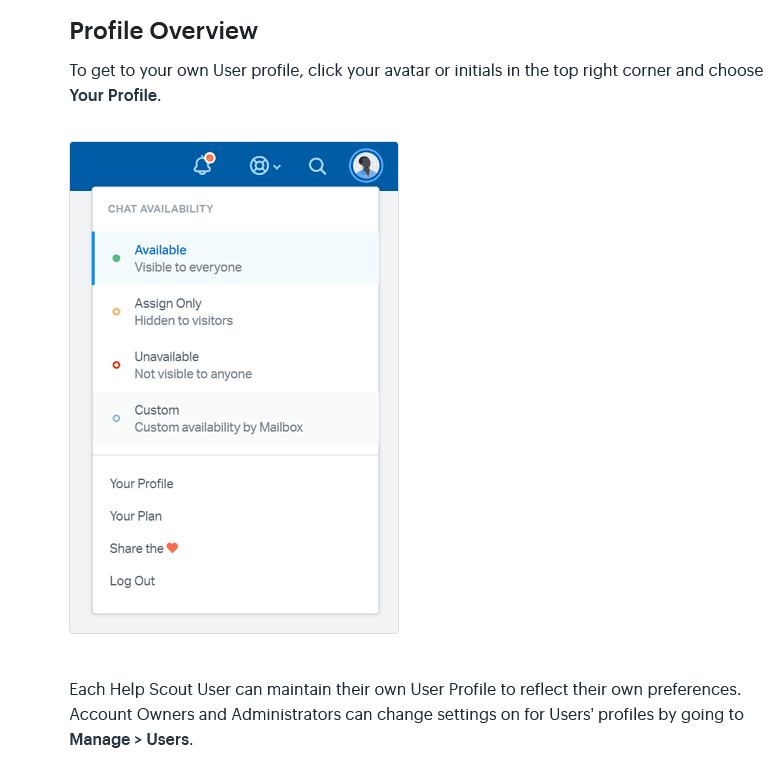
Source: Docs.helpscout
With documentation like that, it’s likely that HelpScout’s customers can find the instructions on every feature and an answer to most questions they might have.
That way, a SaaS company can reduce customer churn—and technical writers can be key to that.
Skills Needed to Be a Great Technical Writer
In previous sections, we mentioned how being a technical writer is a job with many responsibilities and how you can’t expect software developers to write documentation on par with technical writers.
That’s because there are specific skills that great technical writers possess.
One of them is communication.
As technical writer Craig Wright points out, they have to “translate” between experts and consumers.
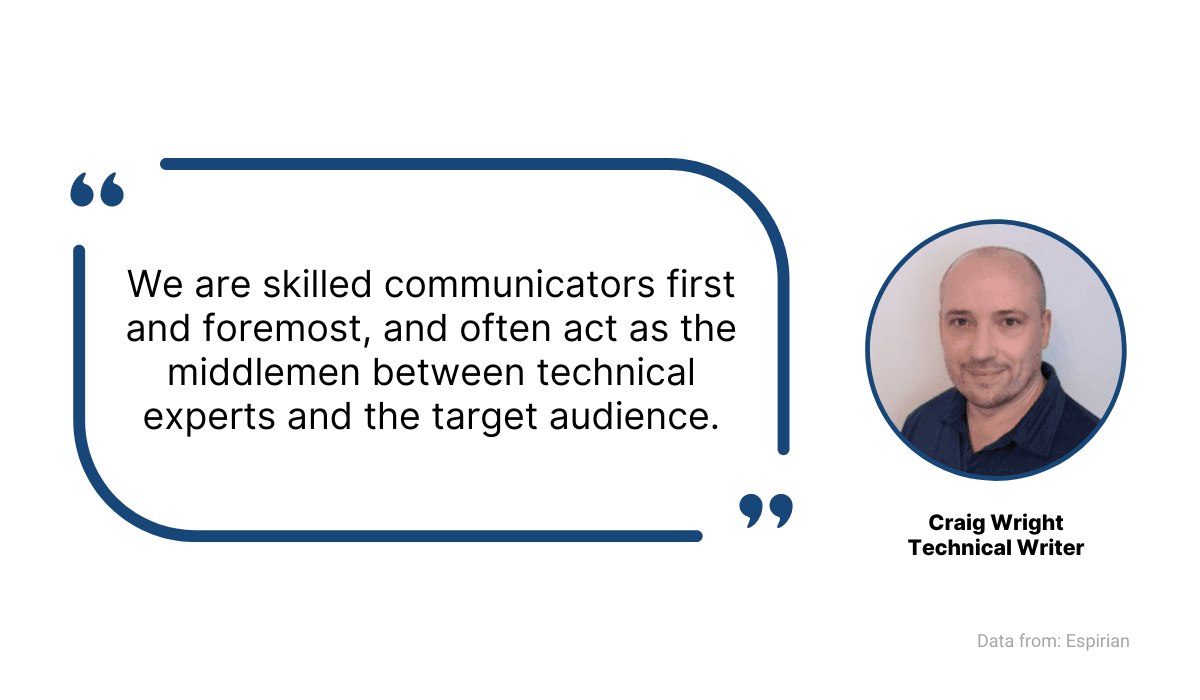
Source: Espirian
Communication skills are needed so a writer can take complex concepts and relay them clearly, concisely, and straightforwardly to the audience.
Of course, being a writer, that’s where the skill of written communication comes in.
Simply put, a technical writer should know how to write well. That also includes the basics of writing, like being able to structure sentences and paragraphs that are easy to read.
Take a look at the example from Gary Provost, a writer and a writing instructor:
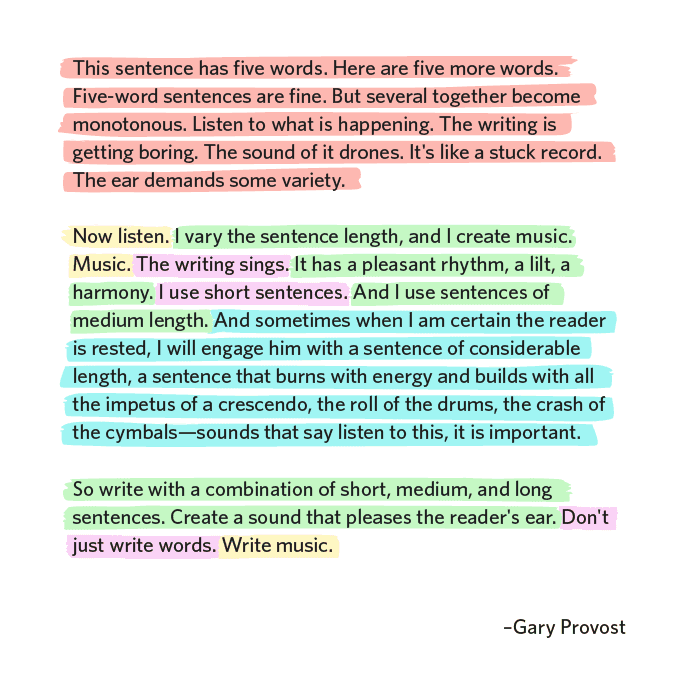
Source: constant-content
That’s equally important for writing a user manual as for writing a novel.
Keep in mind that the user comes to technical documentation to understand and learn something—a boring text without a proper flow or structure can’t fulfill that purpose.
Let’s look at the example of a straightforward and well-structured piece of technical documentation.
Below is a part of the how-to document from K15t, a company that builds apps for Atlassian, about adding a sync button.
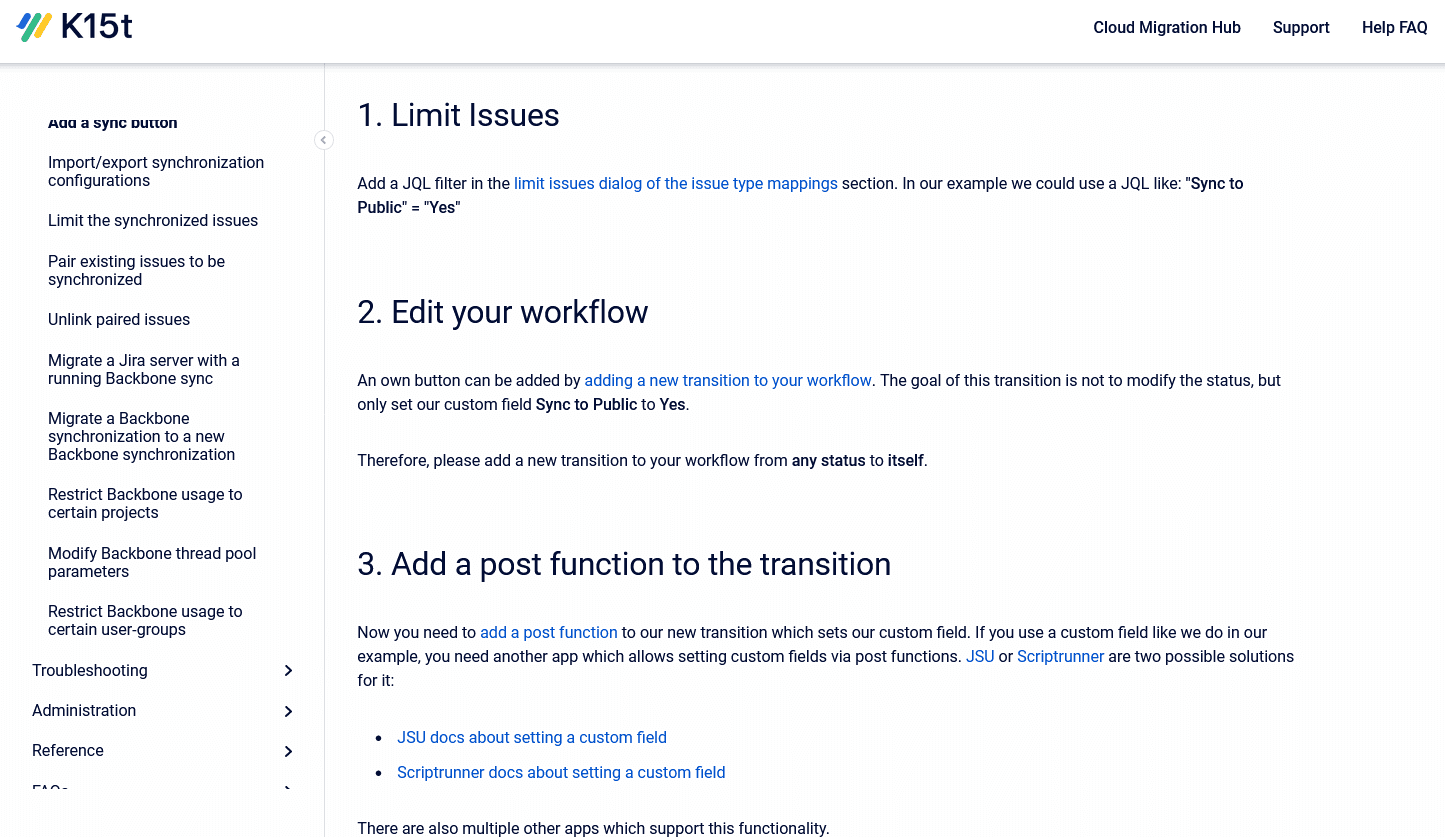
Source: help.k15t
As you can see, a technical writer who created it structured it as a numbered list, with one- or two-sentence paragraphs and a bulleted list for simplifying the instructions further.
That ensures that the reader doesn’t get lost in an endless block of technical writing and gives up before they find what they’re looking for.
You can notice one more important skill in the example above. Let’s zoom in on one specific part of it:

Source: help.k15t
The writer should have enough technical knowledge to create technical documentation.
In this example, a writer had to learn about Jira Query Language (JQL) to write a helpful instruction to the reader and provide an example.
Furthermore, they needed to learn more about the product they write about—since K15t makes apps for Atlassian, and Jira is an Atlassian product, the writer had to research the product along with JQL.
And research is another skill crucial for being a great technical writer.
We mentioned research as one of the common responsibilities of a technical writer, so it’s vital that they know how to be efficient in it.
As technical writer Kesi Parker advises, writers should learn everything they can about the product by asking the right questions:
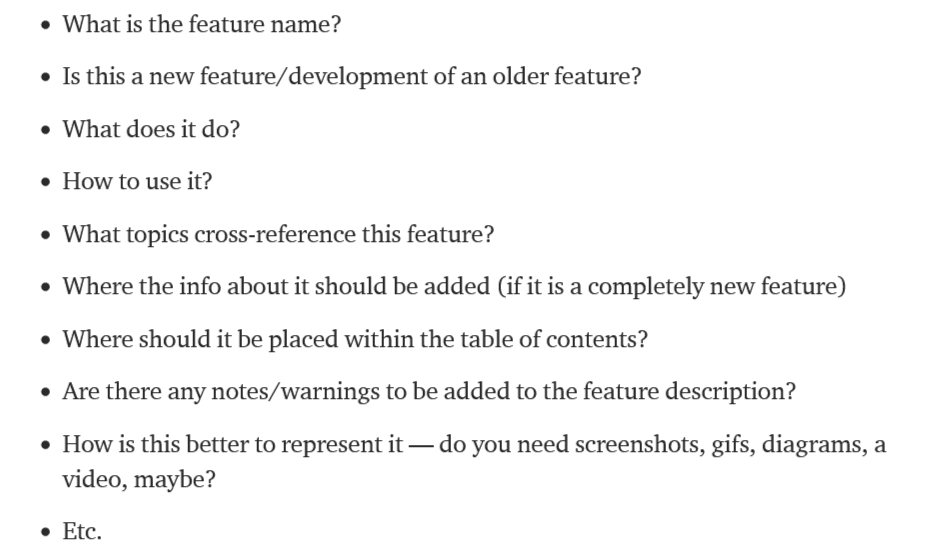
Source: Medium
That’s a great start that leads to finding and analyzing resources, which you can read about more in their article on Medium.
In summation, communication, writing, acquiring technical knowledge, and researching are essential skills for anyone who wants to become a great technical writer.
And if you have that, what qualifications do you need to get a job like one? Let’s find out in the next section.
Technical Writer Job Qualifications
For any aspiring technical writer, it’s helpful to have some qualifications for that job. Not only can education improve those crucial skills we discussed, but it can also help with getting hired.
However, many companies don’t demand that technical writers have a specific degree.
As this software engineer below argues, having the right skills is more important.
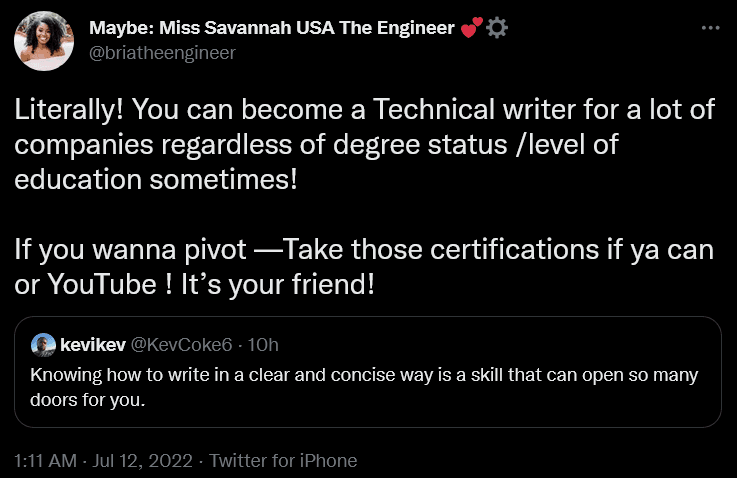
Source: Twitter
However, having some qualifications can undoubtedly be helpful in the job market.
For example, if you want to work as a technical writer at Amazon, you’ll have to meet their requirements regarding education.
As you can see below, they didn’t precisely list the degree needed. Regardless, the company wants candidates adjacent to the tech industry, either with education or experience.
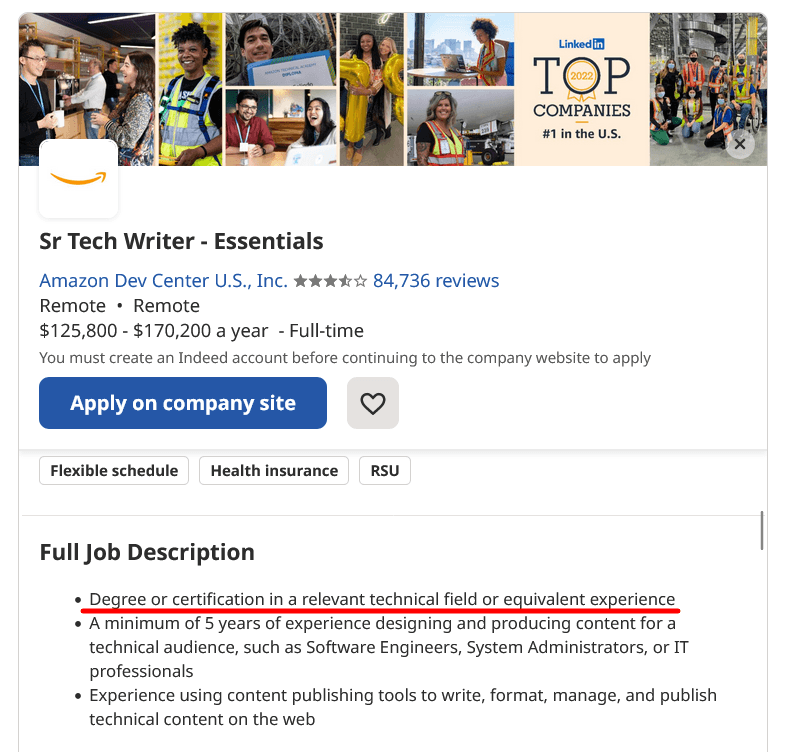
Source: Indeed
Some of the job listings are more precise.
For instance, if you open some at Indeed, you can find requirements for formal education like this:

Source: Indeed
Whether you have formal qualifications or not, there are many options for education and getting certifications online.
For example, if you have software development experience, Google offers technical writing courses tailored for engineers.
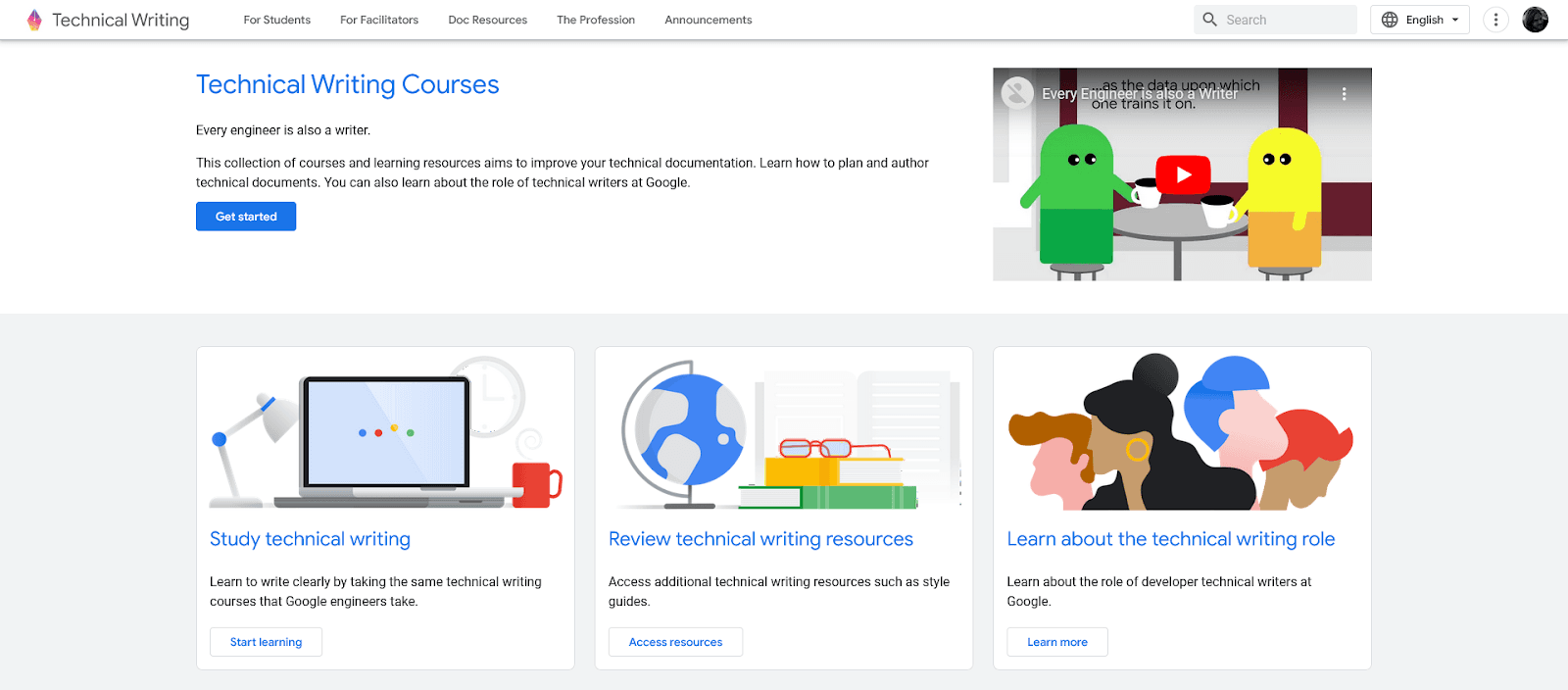
Source: developers.google
You can also attend webinars and online courses at the Society for Technical Communication.
They aren’t free, but they offer a structured and certificated program over several weeks.

Source: stc
LinkedIn also has many technical writing courses.
They range from quick start guides and learning API documentation to reviewing sentence structure and staying motivated—a variety of topics that ensures that most people can find something for their needs.

Source: LinkedIn
And if you’re looking for a formal degree in technical writing, universities offer options.
For instance, the University of Washington has a program for professional technical writing that spans eight months and offers a chance to become a certified technical writer.
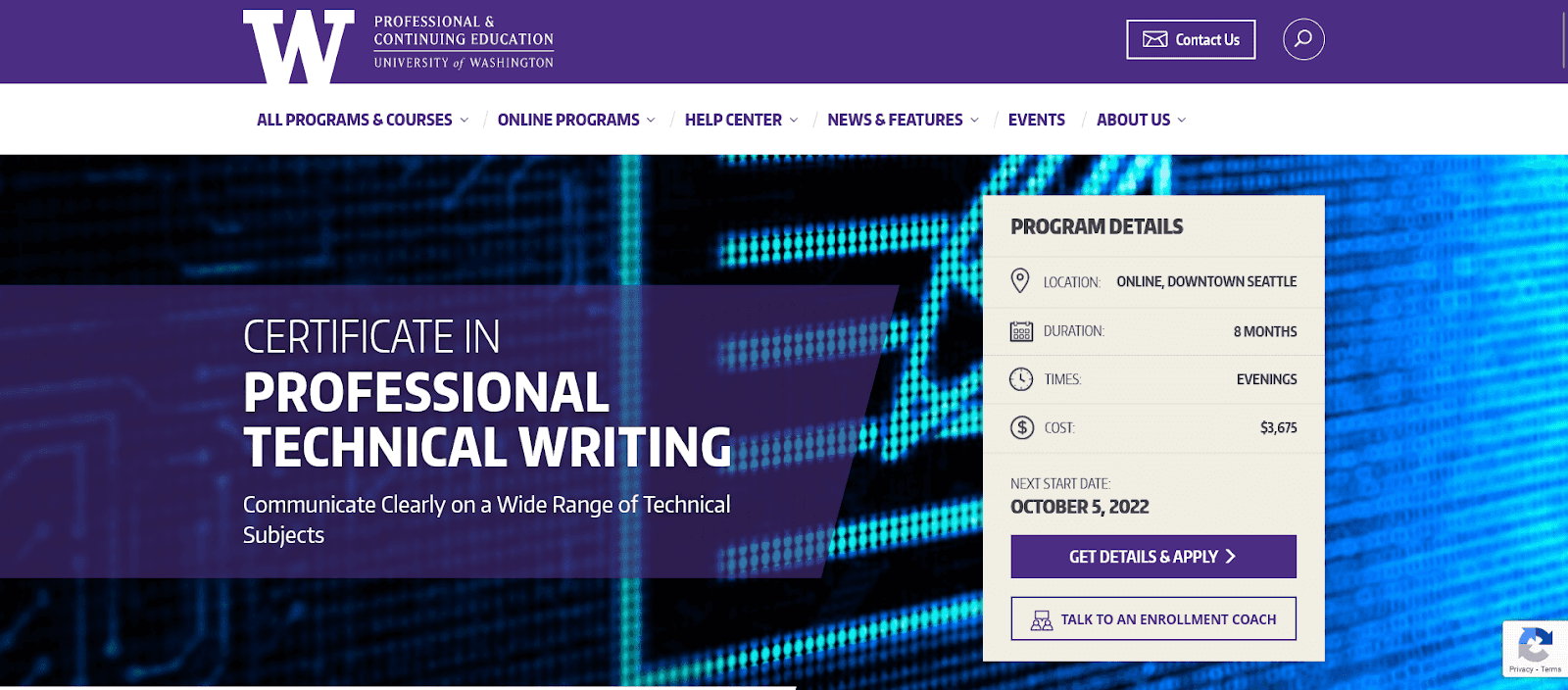
Source: pce.uw
In conclusion, job qualifications for technical writers depend on the company and the industry.
It certainly helps to have a degree relevant to the industry in which a writer wants to work in, but informal education and training can compensate for the lack of it.
Conclusion
Technical writers are an important part of a business’s success.
Whether they write approachable documentation for consumers, complex documents for experts, or intriguing pieces for marketing purposes, their skills can make a difference.
As we pointed out in this article, their job requires attention to detail, creativity, knowledge, and an ability to communicate technical information to the public.
When they use that to create technical documentation, they can make your product stand out from the rest—don’t miss that chance.
Frequently Asked Questions
A technical writer turns complex ideas into clear, usable information. Day to day, they research the subject, interview experts, test features, and define who the content is for. They plan and write things like user guides, quick-starts, troubleshooting articles, knowledge base content, API and SDK docs, release notes, style guides, and SOPs. They structure information so it’s easy to find, add visuals or code examples where helpful, get reviews from subject matter experts, publish, and keep everything accurate and up to date. In short, they bridge the gap between engineers and users so people can understand and use a product with confidence.



